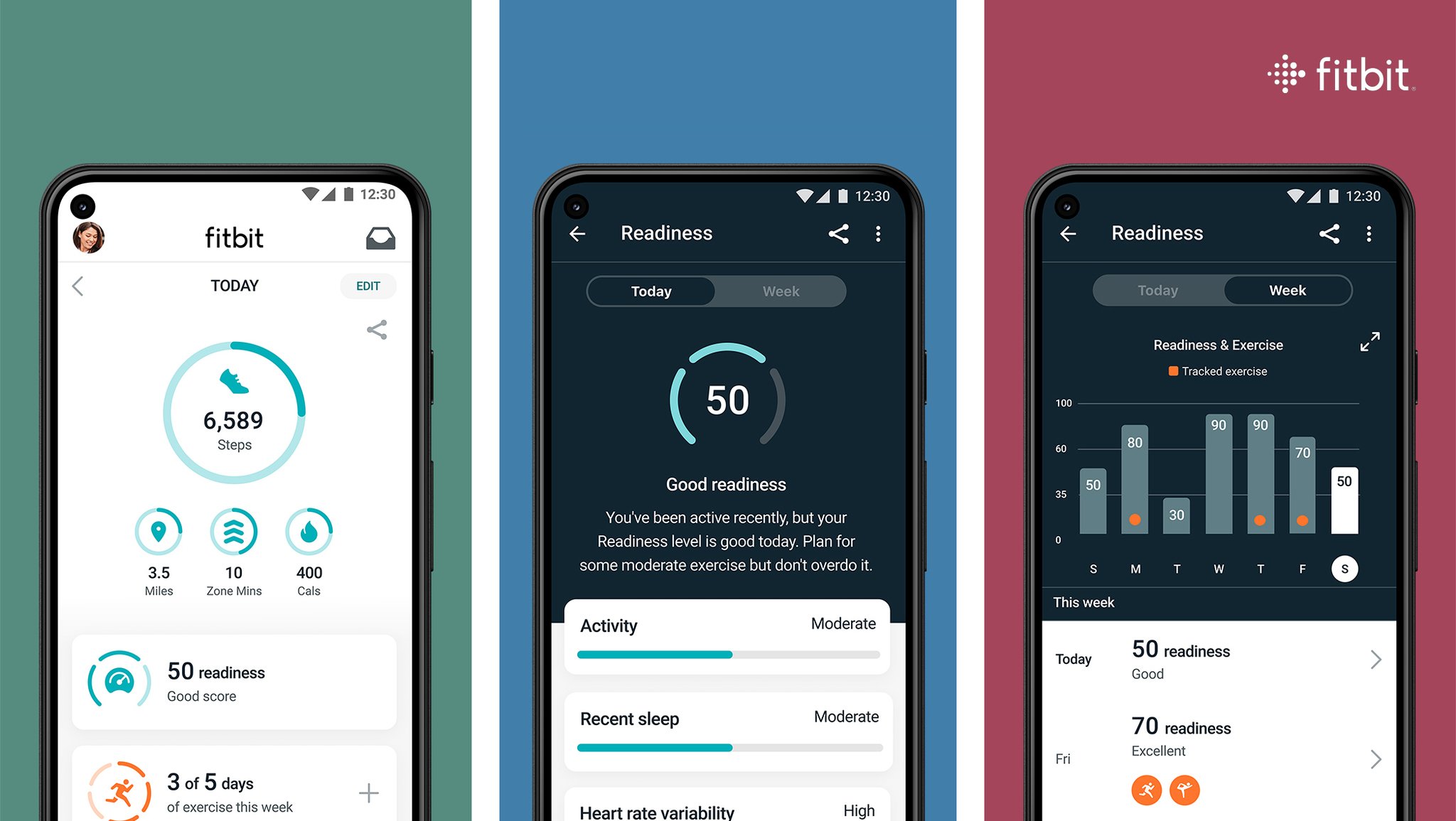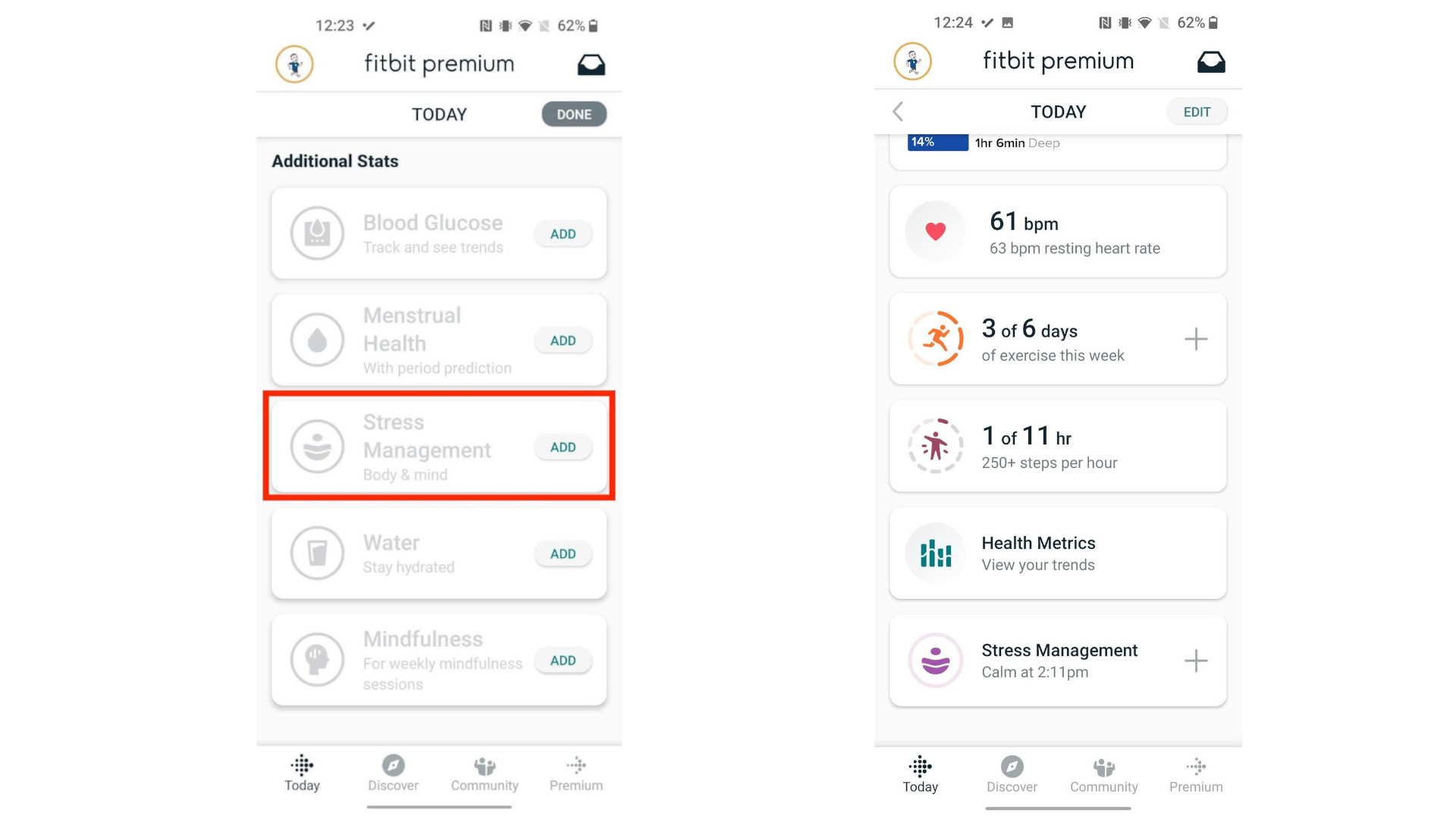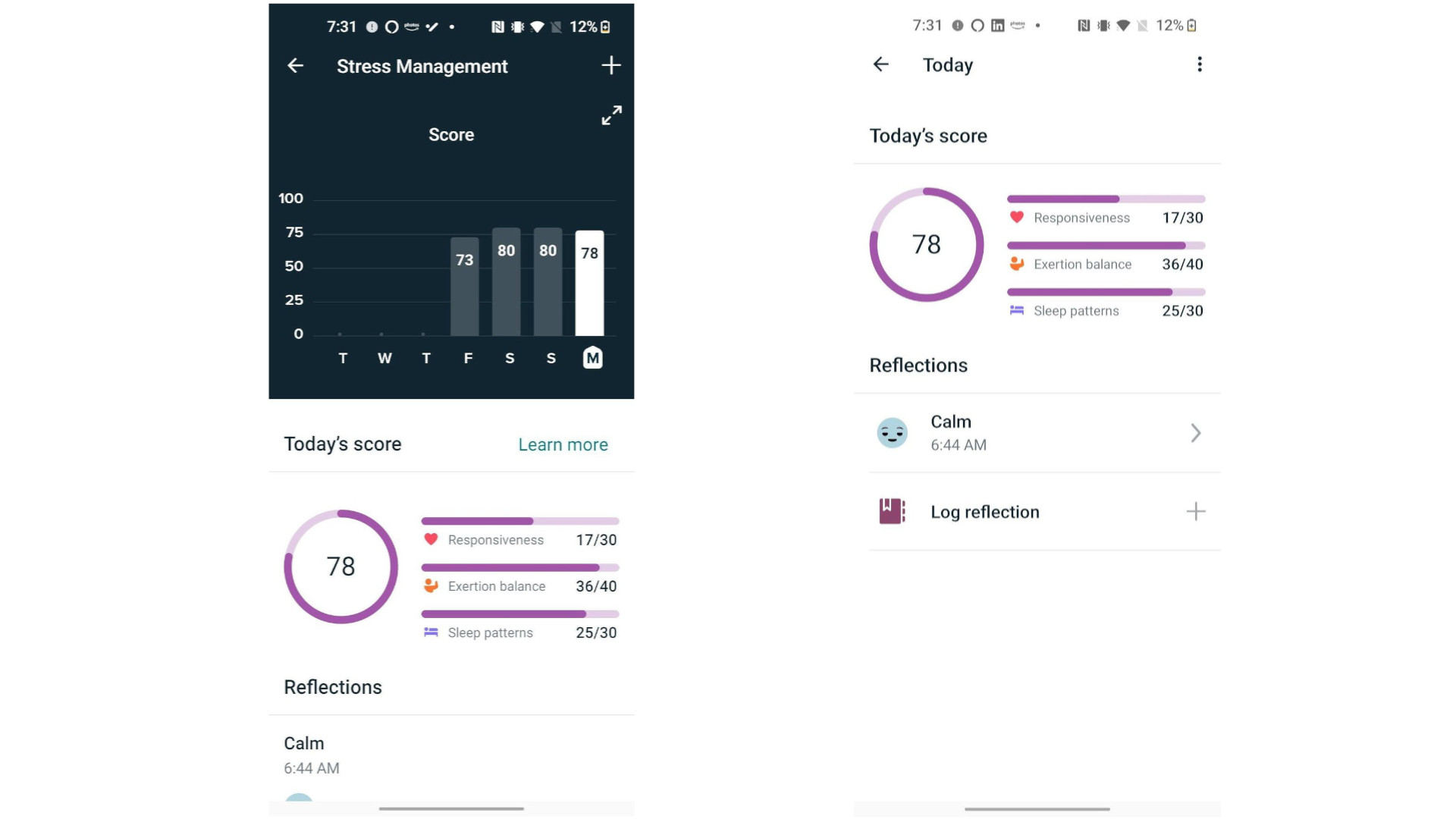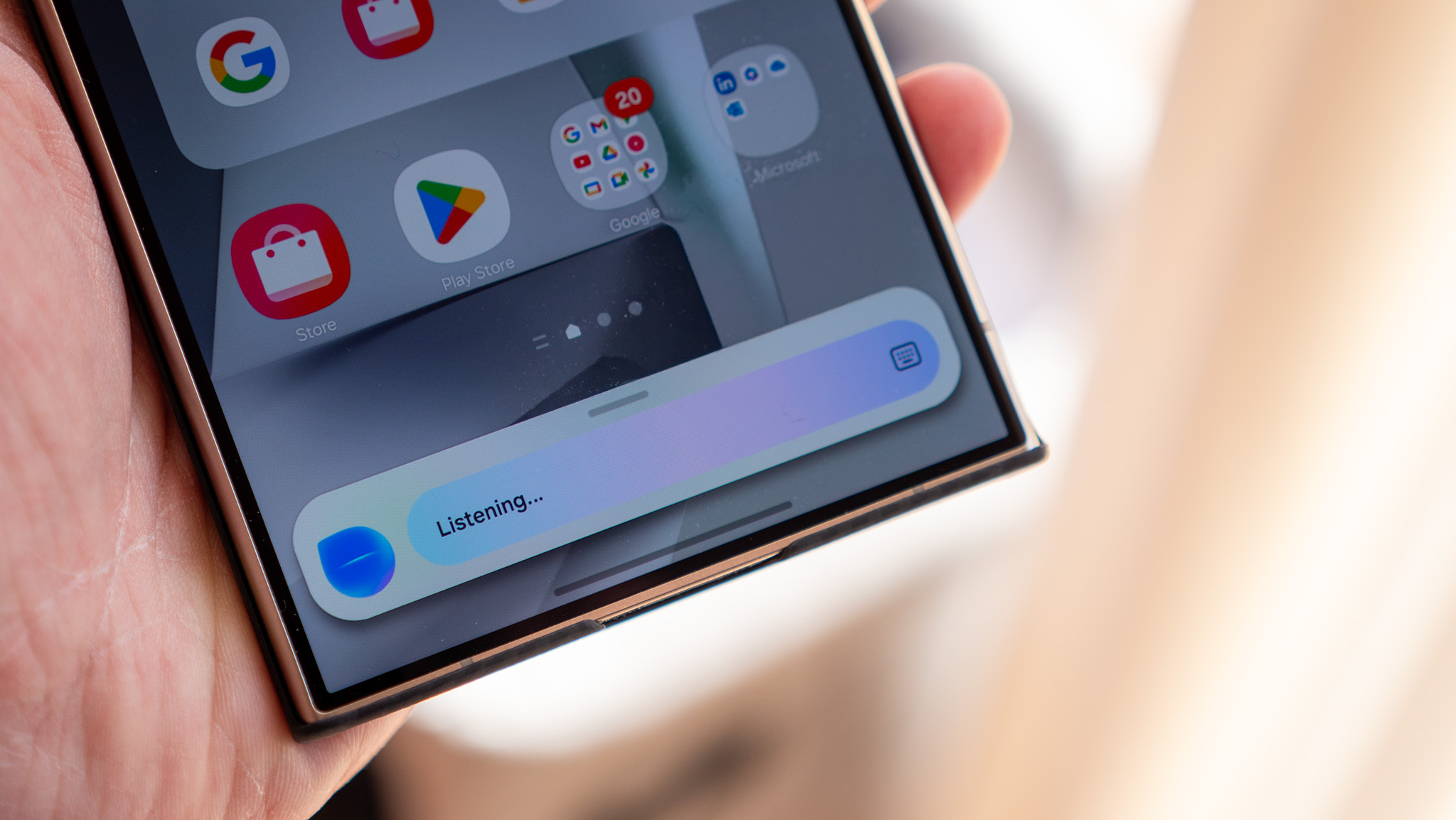Android Central Verdict
With advanced health sensors, a bright color touchscreen, and a stylish new design, the Charge 5 is Fitbit's best tracker ever. However, those jumps in performance and price have put this device closer to the realm of smartwatches than basic fitness bands. That's not necessarily a bad thing, but it may be more than many need or are willing to pay.
Pros
- +
Stylish and comfortable new design
- +
New EDA and ECG sensors
- +
Google Fast Pair for Android
- +
Solid battery life
- +
6 months of Fitbit Premium included
- +
Onboard GPS and tap-to-pay
Cons
- -
Not compatible with previous Charge bands or chargers
- -
Touchscreen can be a bit finicky
- -
Pricier than many fitness trackers
Why you can trust Android Central
While it's not on an annual release cycle like the Apple Watch, Fitbit gives its Charge fitness tracker a refresh every couple of years or so, and the 2021 version offers the most significant changes to the device to date. New sensors, a more attractive design, and a full-color AMOLED display all combine for a compelling package that even beat the popular Charge 4.
Fitbit claimed back when the Charge 5 first launched that one-third of its active users wear a Charge device, and that number has likely only grown given how Fitbit poured so much of its best design and sensor tech into the latest version of the popular wearable.
In addition to its new looks and functionality, Fitbit continues to lean into mindfulness, meditation, recovery, and stress management with the Charge 5 and its Premium fitness service. The company clearly sees this combination as its key to battle the Apples, Pelotons, and WHOOPs of the world moving forward.
Although Fitbit focused on its Sense, Versa, and Inspire lineups in 2022, we strongly suspect that a Fitbit Charge 6 could be on the horizon, even if we know little about it. So does the Fitbit Charge 5 hold up to scrutiny in 2023? Let's dive in and take a look at what I thought of the Fitbit Charge 5.
Fitbit Charge 5: Price, availability, and accessories

The Charge 5 was announced in late August 2021 and immediately went up for sale via pre-order, with the first devices shipping out in late September. Initially priced at $180 — $30 higher than the Charge 4 — it later permanently decreased to $150 at full price, and has frequently dipped as low as $100 during holiday sales.
The Charge 5 is available directly from Fitbit and major retailers such as Amazon, Best Buy, and B&H. Fitbit also sells first-party Charge 5 bands, including sport, leather, infinity, hook and loop, and woven bands, with prices ranging from about $30 to $50.
Plus, you can find official screen protectors to guard against scratches and a clip holder if you want to wear your Charge 5 on your belt instead of your wrist.
Get the latest news from Android Central, your trusted companion in the world of Android
Fitbit Charge 5: What's good
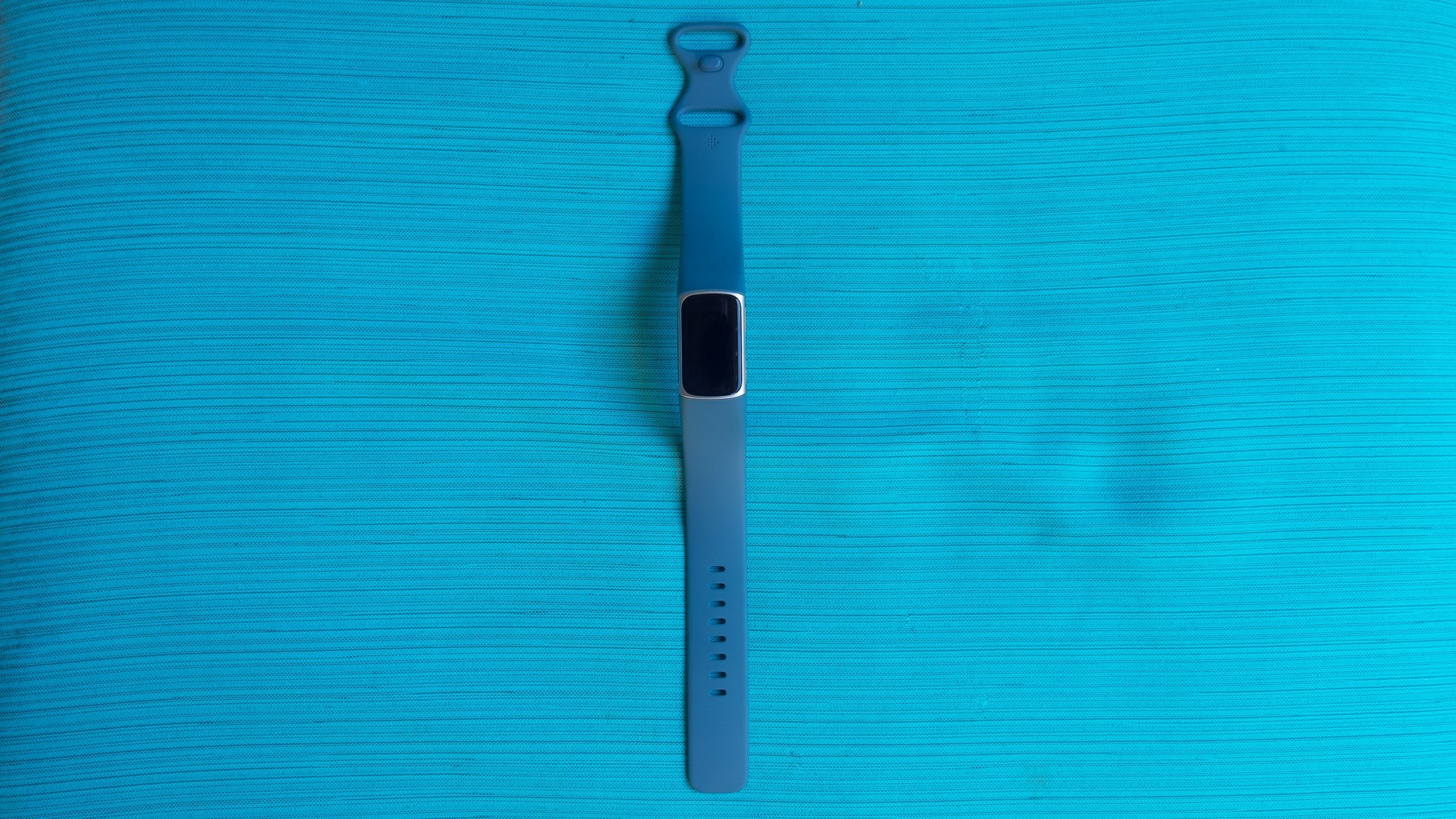
We've long considered Fitbit's Charge devices among the best fitness trackers around, and the Charge 5 has topped Android Central's list since it first launched. This is in part because Fitbit went beyond its more recent incremental updates and made some significant improvements to its best band.
The Charge 5 looks just as nice as the new Luxe but is a much more capable device.
For starters, the design is rounded, organic, and overall more refined than the blockier look of the Charge 2, 3, and 4, and it comes in 10% thinner than previous versions. As a result, it now clearly fits in with the design aesthetic of the Versa 3, Sense, and new Luxe devices. It also sports a larger, brighter version of the Luxe's AMOLED screen, making it easy to read indoors or out. At 450 nits, it's even two times brighter than the Charge 4, and it makes a huge difference. The new casing is also more comfortable to wear, better conforming to the contours of my wrist than previous Charge devices.
The Charge 5 is available in three color options: a platinum case with a Steel Blue band, a Graphite case with a Black band, and a Gold case with a Lunar White band. Additionally, Fitbit offers a wide variety of great first-party straps, including the colors mentioned above in the Infinity configuration (where the strap loops back under the clasp), Horween leather bands, hook and loop bands (fabric with velcro attachment), and the perforated sport bands.
| Category | Fitbit Charge 5 |
|---|---|
| Display | 1.04 inches, AMOLED |
| Water Resistance | Up to 50 meters |
| Dimensions | 1.45 x 0.90 x 0.44 inches (36.78 x 22.79 x11.20 mm) |
| Weight | 0.48 ounces (15 grams) |
| Sensors | 3-axis accelerometer, optical heart rate sensor, SpO2, ECG, EDA, ambient light sensor |
| Onboard GPS | ✔️ |
| NFC | ✔️ |
| Always-on Display | ✔️ |
| Fitbit Premium | Free for six months |
| Colors | Steel Blue/Platinum, Black/Graphite, Lunar White/Gold |
On paper, the Charge 5 promises up to seven days of battery life, same as the Charge 3 and 4. While we always want more from our device's batteries, it is good to see that Fitbit was able to maintain the same capacity, even as it added sensors, features, and new screen technology.
In my testing, I found this estimate to be on target. I was able to get just over six days out of a single charge, and this included using GPS mode for four separate workouts (over three hours in total) and with max brightness and continuous heart rate monitoring turned on.
Even though it is an option, I did not enable the always-on display because that has a considerable impact on the battery life (brings it down to two days maximum), and it's never been an essential feature to me.
Fitbit brought some of its most advanced health features and sensors from its premium smartwatch to this premium tracker, including the ability to take EDA and ECG scans to measure your electrodermal activity and heart rhythm. Both are accessed through "apps" on the Charge 5, and both work the same way as they do on the Sense smartwatch.
Once you open the EDA app and press the start button, you simply grip the thumb and finger of your opposite hand on the sides of the watch (there are obvious panels to guide you) for three minutes, and then you get the opportunity to add how calm you felt during the process. Over time, this information can help provide you with guidance and advice on your training and recovery.
You get a ton of smartwatch features with this advanced tracker.
In addition to these new sensors, the Charge 5 continues to distinguish itself from Fitbit's other trackers by offering on-device GPS and NFS for contactless payments. Almost no fitness trackers besides the Charge 5 and 4 have onboard GPS even today, since most trackers have a more budget-friendly, compact design and wouldn't have the battery size to support it.
The NFC payments are still through Fitbit Pay, whereas newer Fitbits like the Sense 2 and Versa 4 have now transitioned to Google Wallet and incorporated more Google apps like Maps. As advanced as the Charge 5 is for a tracker, it's not as smart as some Fitbit smartwatches, but is certainly more portable.
One Google-y feature the Charge has right now is Fast Pair, which takes you right into the Fitbit app set up as soon as you power on your Charge 5 out of the box (Android-only).
You also get 20 different exercise presets, but if you can't find the workout you want or you forget to start one, the Charge 5 has SmartTrack technology that automatically detects when you've begun a workout. It generally works well, though it sometimes makes hilarious mistakes, like when it categorizes my lawnmowing as cycling or swimming.
SmartTrack workouts also don't include the workout intensity map, which I love. Basically, when you start an active workout and have GPS enabled, this feature shows you on a map what your pace and heart rate was at different points in your walk, hike, run, or ride. I've always liked this feature on my Garmin smartwatches, and it's nice to have here as well.
Along with the Charge 5, Fitbit rolled out its popular Daily Readiness Score. Fitbit generates this score each morning based on your heart rate variability (HRV), overall activity levels, and sleep data. The goal is to measure your body's readiness for activity or whether you need more rest.
Fitbit uses this information to suggest activities, workouts, targets, and fitness goals based on this information. It is a very similar idea to the readiness and recovery guidance that companies like WHOOP and Oura have been providing their customers for years now, and it's something that Fitbit Premium customers should get a lot of value from.
You can also monitor your Stress Management Score in the Fitbit app, though you'll need to manually add the tile for it as it's not among the default tiles on the main screen.
The Stress Management Score is calculated based on your own personal reflections of your stress level, combined with data from your mindfulness sessions, heart rate, overall activity, and sleep information. As with most scores, the higher, the better, as that means that Fitbit has detected fewer signs of overall physical stress.
Both the Daily Readiness Score and the detailed Stress Management Score reports are Premium features, but since you get a free six months of the service with the purchase of a Charge 5, you'll have plenty of time to try them out and see if you benefit from them.
I appreciate that Fitbit is pretty generous here with the lengthy trial period for its Premium service. The six months you get with a Charge 5, Luxe, Versa 3, or Sense is more than double the three-month of Apple Fitness+ you get with purchasing a new Apple Watch.
Fitbit Charge 5: What's not good
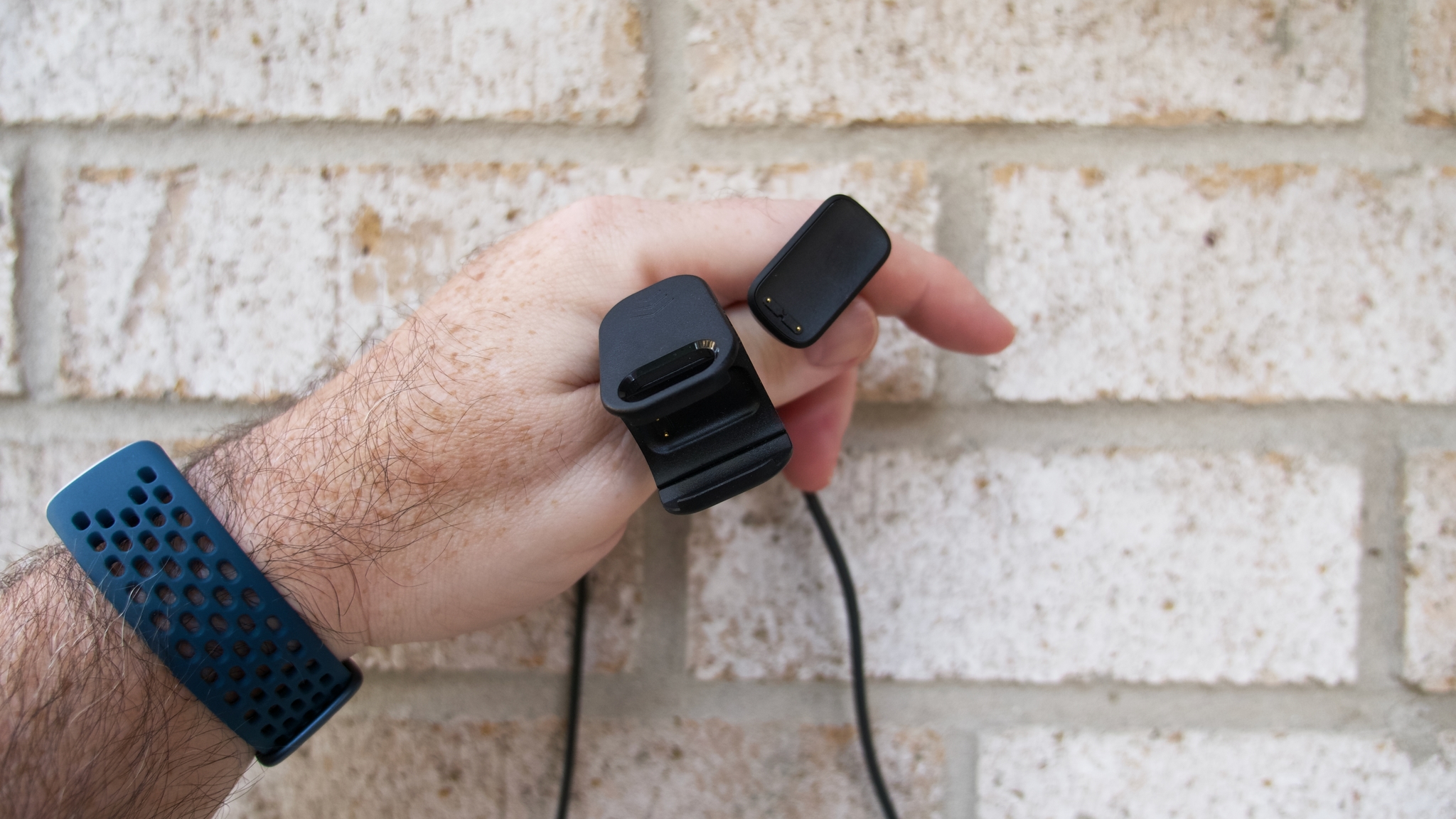
I've been a regular Fitbit wearer for over five years now, and during most of that time, I've worn some version of the Charge tracker, so needless to say, I'm a fan. That's not to say that everything is perfect here, but there is an awful lot to like with the Charge 5. It's better than the Charge 4 in just about every way, and it feels like it makes up for the ways in which I felt the Luxe was lacking.
Once again, Fitbit ships a device with a new proprietary charger and bands.
My complaints with the Charge 5 are relatively minor in the grand scheme of things, but a few things frustrated me with the newest Fitbit. To begin with, we once again are faced with an all-new set of proprietary bands and chargers. Of course, that means they're not backward compatible with the Charge 3 or 4, and those bands and chargers won't work with the Charge 5.

In Fitbit's defense, the Charge 5 has a different design and dimensions than those earlier devices, so it makes sense that the old accessories won't fit the new tracker. Still, it's kind of a bummer that Fitbit couldn't keep compatibility for longer, particularly since the Apple Watch Series 7 can still use the same bands and charger as a seven-year-old first-generation Apple Watch, and vice-versa.
The one major usability complaint I had concerned the touchscreen and new navigation paradigm. The Charge 5 suffers from the same issues that all touchscreen devices have when your fingers are wet or sweaty — it just doesn't respond as well. That's less a problem with something like a phone, but it's pretty inconvenient when you're working out or swimming.
The touchscreen takes getting used to and requires you to be very intentional with your taps and swipes.
There are no buttons or even faux-haptic buttons to navigate back to the home screen, and in order to do so, you must either swipe left or right out of an "app" screen or firmly double-tap any screen to return home. The problem is, this was very hit or miss for me, no pun intended. I had the same issue when reviewing the Luxe earlier in 2021, and it's something my colleague Tshaka Armstrong noticed when filming his video review for Android Central.
"The touchscreen DEFINITELY took some getting used to," Tshaka told me. "Compared to other touchscreens, you have to be — ahem — very intentional."
Finally, I have to comment on the price increase. The Charge 5 retails for $30 more than the Charge 4's initial price (though you can now get a Charge 4 for as much as $50 less and that Fitbit Charge 5 has also been on sale for the holidays).
It's obvious why Fitbit is charging more for the new tracker — it has a new and more premium design, a fancier color display, and new sensor technology — but that's a big jump in one generation. At that price, it's approaching the territory of some of the best smartwatches, including the Samsung Galaxy Watch 4 and Garmin Venu Sq.
Fitbit Charge 5: Updated features

Just a few months after its release, the Fitbit Charge 5 started receiving some important and promised updates, including the launch of the Fitbit Daily Readiness Score and the ECG app:
- Users can now use the ECG app to assess their heart for a medical condition called atrial fibrillation (AFib), which is a heart rhythm irregularity.
- Fitbit Premium users can now access the Daily Readiness Score. A higher score indicates you're primed for a high-intensity workout while a low score means your body is tired and you should prioritize rest.
In mid-2022, Fitbit added new "Bloom" watch faces that show different colorful flower petals as you swipe between different fitness statistics like Active Zone Minutes. Plus, the Charge 5 got a Find Phone app that lets you track down a connected phone via Bluetooth if it's within 30 meters of your position, by triggering a loud noise on your phone.
In early 2023, Fitbit added two more watch faces to the Charge 5 called Analogish and Aura that originally debuted on the Luxe, as per 9to5Google. Evidently, Fitbit is still actively updating and supporting the Charge 5 software, albeit at a slower pace than in the early days.
Fitbit Charge 5: Competition

Aside from comparing the Charge 5 to the Charge 4, the next logical comparison is with Fitbit's other premium tracker, the Luxe. Both share a strikingly similar design language with stainless steel casings, colorful touchscreens, and identical UI paradigms. The most significant differences are that the Charge 5 is larger and more expensive than the Luxe and that it has more health sensors, NFC, built-in GPS, and better battery life.
The Luxe is fairly old at this point, whereas the 2022 Fitbit Inspire 3 is the petite tracker for those who think the Charge 5 is too close to a smartwatch in size. You get fewer sensors and no built-in GPS, but you get the Fitbit Premium essentials in a device that's so lightweight that you'll barely notice it while working out. We still prefer the Charge 5, especially since you can get it for close to the same price as the Inspire 3 on sale, but it's an alternative worth considering.

The Amazfit Band 7 has a bright full-color AMOLED display that's only slightly smaller than the Charge 5's. It, too, lacks the NFC, built-in GPS, and extra sensors that the Charge 5 gives you, but you can get it for much less upfront and see your health data and recommendations without a monthly subscription.
Lastly, you may want to look into the Garmin Vivosmart 5. It offers much of the same information like Body Battery recharge, sleep and stress tracking, Pulse Ox, a 7-day battery life, maximum, and IP68 water resistance.
It lacks built-in GPS, ECG, or EDA tracking, unfortunately, and costs more upfront; but it makes up for it quickly by giving you data for free instead of charging a monthly fee as Premium does.
Fitbit Charge 5: Should you buy it?

You should buy this if ...
- You like the fit and feel of a fitness band.
- You want advanced health tracking without spending smartwatch prices.
- You are already in the Fitbit/Google ecosystem.
You shouldn't buy this if...
- You just want basic fitness tracking; there are many quality options for less money.
- You want smartwatch apps and functionality.
- You're not a fan of touch-only navigation.
The Fitbit Charge 5 is an excellent fitness tracker, but it's not for everyone. Even when on sale, the Charge 5 costs more than most trackers when you take into account the Premium subscription (after the trial ends). Something from Garmin, Amazfit, Xiaomi, or even Amazon might suit your needs better.
But in terms of the best Fitbit devices? The Charge 5 will actually save you money if you're invested in the Premium experience.
I think it's fascinating to see how far this once-basic fitness tracker has evolved. From only having a small LED that showed your steps and the time to a large AMOLED touchscreen, from not even having a heart rate monitor to sporting some of the most advanced health sensors on any wearable, the Charge 5 has come a long way in just a few years.
But has it come too far? Functionally, there's not much that this device can't do when compared to many sport watches, and its price point is quickly approaching some of the more popular smartwatches. As a result, I'm almost more comfortable calling the Charge 5 a smartwatch "lite" than a tracker "plus." If you're really into the Fitbit ecosystem, you're going to love the Charge 5. However, if your needs are more basic, or if you want a proper fitness smartwatch, you might want to look elsewhere.
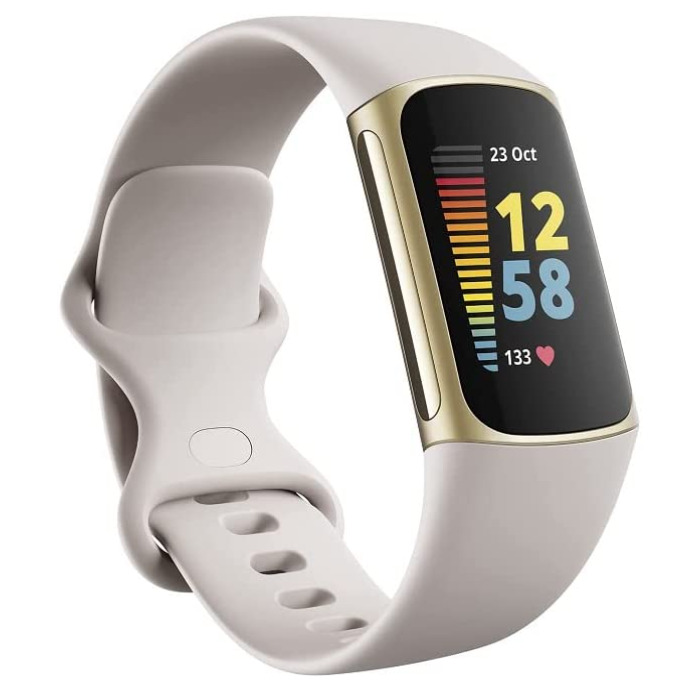
The Charge 5 is Fitbit's most advanced tracker ever, with high-end sensors found on more expensive smartwatches. It sports a new, refined design that is extremely comfortable and sure to appeal to the fashion-conscious.
Review Changelog
Review Changelog
This article was originally published in September 2021. It was updated in December 2021 with the following changes.
- Updated pricing to reflect recent sales.
- Added "Updated features" section.
- Added mention of Fitbit Daily Readiness Score.
- Added mention of ECG app.
It was updated July 2022 with the following changes:
- Fixed formatting errors introduced by site migration.
- Added Find Phone and new watch faces to Updated features.
It was updated February 2023 with the following changes:
- Added reference to upcoming Fitbit Charge 6 in introduction.
- Mentioned price drop and frequent sales in Price and Availability.
- Mentioned rarity of onboard GPS in trackers, and the newer Fitbits with more Google apps.
- Added Fitbit Inspire 3 and Amazfit Band 7 to Competition.

Jeramy was the Editor-in-Chief of Android Central. He is proud to help *Keep Austin Weird* and loves hiking in the hill country of central Texas with a breakfast taco in each hand.
- Michael L HicksSenior Editor, Wearables & AR/VR
- Courtney Lynch

